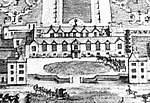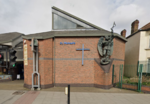City of London Cemetery and Crematorium

The City of London Cemetery and Crematorium is a cemetery and crematorium in the east of London. It is owned and operated by the City of London Corporation. It is designated Grade I on the Historic England National Register of Historic Parks and Gardens. Anyone can be interred at the City of London Cemetery irrespective of city connections or religious beliefs. The cemetery reuses graves which have not been used for more than 75 years, and which are known to have depth for at least two more burials. English Heritage has listed many burial grounds and says it has no objection to the reuse of graves in principle, as long as heritage is protected.
Excerpt from the Wikipedia article City of London Cemetery and Crematorium (License: CC BY-SA 3.0, Authors, Images).City of London Cemetery and Crematorium
St Andrews Road, London Manor Park (London Borough of Newham)
Geographical coordinates (GPS) Address Nearby Places Show on map
Geographical coordinates (GPS)
| Latitude | Longitude |
|---|---|
| N 51.56 ° | E 0.048 ° |
Address
St Andrews Road
St Andrews Road
E12 5DS London, Manor Park (London Borough of Newham)
England, United Kingdom
Open on Google Maps










